Welcome to the Nov. 9th, 2022 issue of Radio World







THE INTELLIGENT NETWORK 100% WHEATNET-IP COMPATIBLE PRECISION ENGINEERED Made here in New Bern NC THE ENGINE YOUR ENTIRE STUDIO I/O THE FUTURE Expanded I/O or More Networked Studios
couldn’t be easier... DMX W heatnet - ip n et W orked d igital C onsole
It
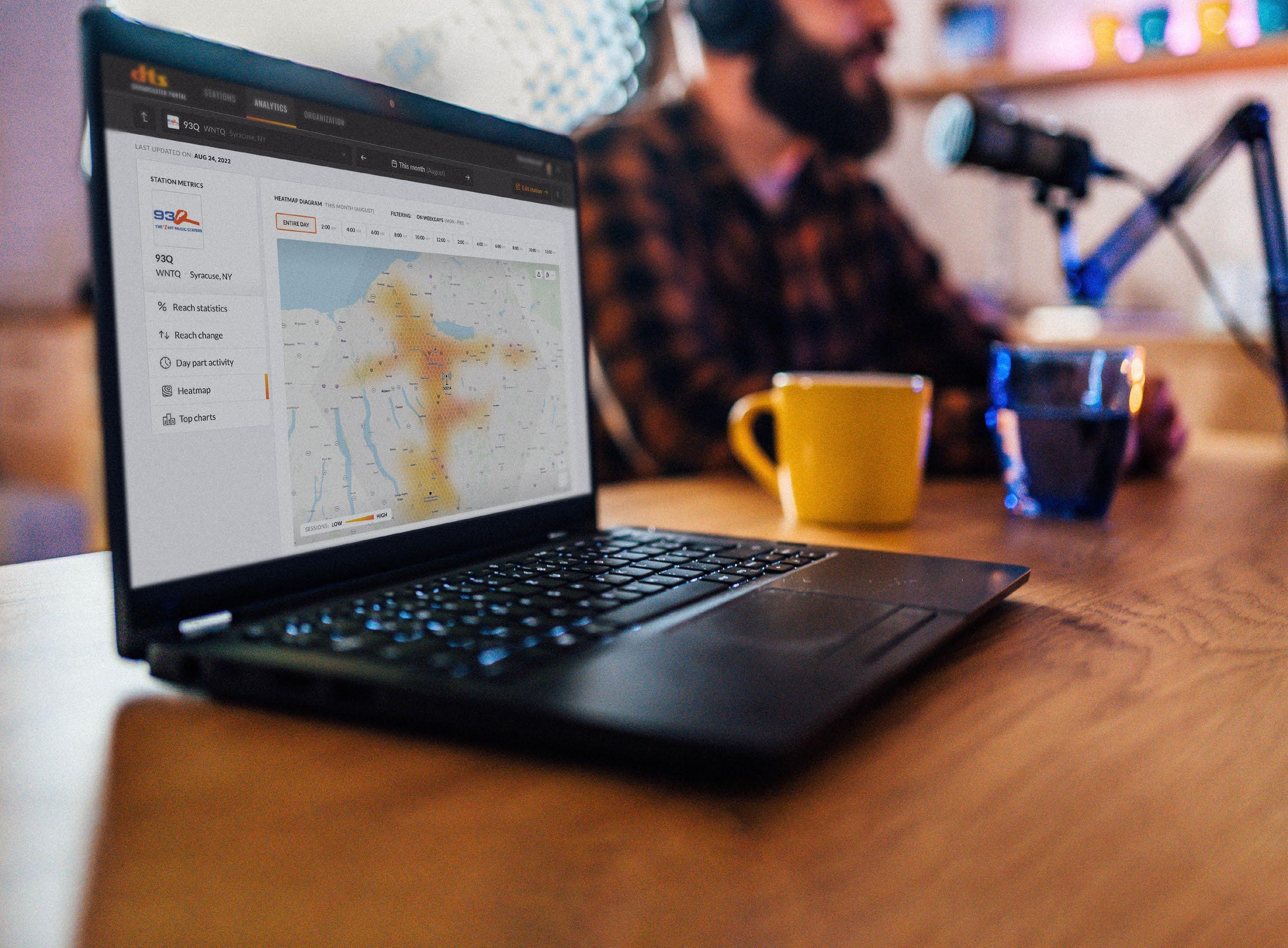

Xperi highlights DTS AutoStage analytics Industry gets its first look at the manager’s dashboard, offering listening
maps” and other tools. LordHenriVoton/Getty Images Your guide to radio technology radioworld.com | November 9 2022 | $5.00 A threat from wireless EV charging As if AM stations needed another headache. Unwanted visitor Winston Hawkins wonders where an unfamiliar black cable came from. Get consistent, get Angry The Chameleon C4 Livestream Processor applies AI to streaming levels.
“heat

Vol. 46 No. 28 | November 9 2022
www.radioworld.com
FOLLOW US www.twitter.com/radioworld_news www.facebook.com/RadioWorldMagazine
CONTENT
Managing Director, Content & Editor in Chief Paul J. McLane, paul.mclane@futurenet.com, 845-414-6105
Content Producer & SmartBrief Editor Elle Kehres, elle.kehres@futurenet.com
Technical Advisors Thomas R. McGinley, Doug Irwin Technical Editor, RW Engineering Extra W.C. “Cris” Alexander
Contributors: Susan Ashworth, David Bialik, John Bisset, Edwin Bukont, James Careless, Ken Deutsch, Mark Durenberger, Charles Fitch, Donna Halper, Alan Jurison, Paul Kaminski, John Kean, Gary Kline, Larry Langford, Mark Lapidus, Michael LeClair, Frank McCoy, Jim Peck, Mark Persons, Stephen M. Poole, James O’Neal, John Schneider, Dan Slentz, Dennis Sloatman, Randy Stine, Tom Vernon, Jennifer Waits, Steve Walker, Chris Wygal
Production Manager Nicole Schilling
Managing Design Director Nicole Cobban
Senior Design Directors Lisa McIntosh and Will Shum
ADVERTISING SALES

Senior Business Director & Publisher, Radio World John Casey, john.casey@futurenet.com, 845-678-3839
Publisher, Radio World International Raffaella Calabrese, raffaella.calabrese@futurenet.com, +39-320-891-1938
SUBSCRIBER CUSTOMER SERVICE
To subscribe, change your address, or check on your current account status, go to www.radioworld.com and click on Subscribe, email futureplc@computerfulfillment.com, call 888-266-5828, or write P.O. Box 1051, Lowell, MA 01853.
Licensing/Reprints/Permissions
Radio World is available for licensing. Contact the Licensing team to discuss partnership opportunities. Head of Print Licensing Rachel Shaw licensing@futurenet.com
MANAGEMENT
Senior Vice President Group Elizabeth Deeming
Vice President, Sales & Publishing, B2B Aaron Kern
Vice President, B2B Tech Group Carmel King
Vice President, Sales, B2B Tech Group Adam Goldstein
Head of Production US & UK Mark Constance Head of Design Rodney Dive
FUTURE US, INC.
130 West 42nd Street, 7th Floor, New York, NY 10036
All contents ©Future US, Inc. or published under licence. All rights reserved. No part of this magazine may be used, stored, transmitted or reproduced in any way without the prior written permission of the publisher. Future Publishing Limited (company number 02008885) is registered in England and Wales. Registered office: Quay House, The Ambury, Bath BA1 1UA. All information contained in this publication is for information only and is, as far as we are aware, correct at the time of going to press. Future cannot accept any responsibility for errors or inaccuracies in such information. You are advised to contact manufacturers and retailers directly with regard to the price of products/services referred to in this publication. Apps and websites mentioned in this publication are not under our control. We are not responsible for their contents or any other changes or updates to them. This magazine is fully independent and not affiliated in any way with the companies mentioned herein.
If you submit material to us, you warrant that you own the material and/or have the necessary rights/ permissions to supply the material and you automatically grant Future and its licensees a licence to publish your submission in whole or in part in any/all issues and/or editions of publications, in any format published worldwide and on associated websites, social media channels and associated products. Any material you submit is sent at your own risk and, although every care is taken, neither Future nor its employees, agents, subcontractors or licensees shall be liable for loss or damage. We assume all unsolicited material is for publication unless otherwise stated, and reserve the right to edit, amend, adapt all submissions.
Radio World (ISSN: 0274-8541) is published bi-weekly with additional issues in February, April, June, August, October and December by Future US, Inc., 130 West 42nd Street, 7th Floor, New York, NY 10036. Phone: (978) 667-0352. Periodicals postage rates are paid at New York, NY and additional mailing offices.
POSTMASTER: Send address changes to Radio World, PO Box 1051, Lowell, MA 01853.
“Historic” analytics?
Xperi
unveils DTS AutoStage’s
dashboard for radio managers
Xperi unveiled new details in October about the analytics capabilities of its DTS AutoStage hybrid radio platform.
Paul McLane Editor in Chief
The company told radio executives gathered at NAB Show New York that the insights the system will provide about listener behavior will be a major sales and analytics tool for broadcasters.
Speaking in support, Pierre Bouvard, the chief insights officer of Cumulus Media and Westwood One, called Oct. 19 “a historic day” because of the unveiling of the analytics and of a user dashboard that Xperi hopes radio managers will use to access them.
The fact that the platform is a hybrid radio system means that while the car is receiving OTA radio programming, it is supplementing that with a twoway data connection online. That connection not only provides additional metadata to the car but gives Xperi data about the user behavior.

Xperi Senior Vice President of Broadcast Joe D’Angelo said the analytics that will be available for free to stations that participate in DTS AutoStage will be a powerful complement to ratings systems like Nielsen Audio, because the data not only captures specific information about audience behavior in vehicles in a station’s market, but it is based on a huge sample size. And the tool will be available to broadcasters in unrated markets as well.
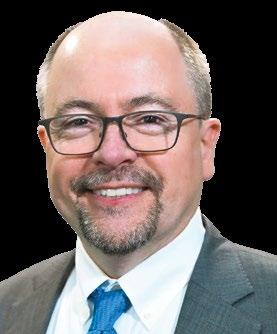
Bouvard described the evolving DTS AutoStage platform as providing “big data for American radio from the
Continued on page 14
Please recycle. We are committed to only using magazine paper which is derived from responsibly managed, certified forestry and chlorine-free manufacture. The paper in this magazine was sourced and produced from sustainable managed forests, conforming to strict environmental and socioeconomic standards.
An image of a DTS AutoStage system from the Xperi website.
THIS ISSUE NEWS 3
4
5
FEATURES 10
18
22
STREaming LEvels?
24
simple
OPINION 29 Extreme
challenges
30 Readers’ Forum
From the editor
Newswatch
Sinclair eyes TV for audio delivery
Workbench: Why the transmitter won’t make licensed power
Wireless EV charging could pose threat to AM reception
INconSIStent
Get Angry!
Cybersecurity is founded on
principles
weather
radio assumptions
3
RFS Will Shutter Most of Its Broadcast Business
Radio Frequency Systems will “ramp down” its broadcast and defense systems business globally, except for cable, according to a letter to RFS customers from President/CEO Monika Maurer.
“This decision was a very difficult one, and one that was taken only after many rounds of reviews and discussions with our shareholders,” she wrote in October.
Implementation has started and “is planned to be completed in the coming months.” RFS will fulfill outstanding orders.
The company did not reply to several requests for comment from Radio World about the details including the impact on its workforce.
But RFS will close a facility in Australia, according to a separate letter to customers from RFS Australia General Manager Gopal Naidu. The office in Kilsyth in the state of Victoria “will complete its manufacturing commitments by 16 December 2022 with the office to close early in 2023.”
RFS, headquartered in Germany, has five manufacturing facilities globally and more than 1,000 employees, according to its website, which describes its business as providing “innovative wireless and broadcast infrastructure products and solutions.” Much of that is with mobile and fixed wireless operators, OEMs, distributors, systems integrators and microwave companies.
The company’s beginnings date to 1900, when a predecessor company, Hackethal Draht und Kabelwerke, was established to make electric cables.
Current product offerings for broadcast include television, DAB and FM antennas, combiners, filters and switching systems. Among recent broadcast work was television infrastructure for One World Trade Center in New York. In September RFS launched two new ranges of antennas for next-generation TV broadcasting standards.


4 Newswatch
Above Among the company’s broadcast products are FM combiners like this one, shown in an artist’s rendering on the RFS website.
Sinclair eyes TV for audio delivery

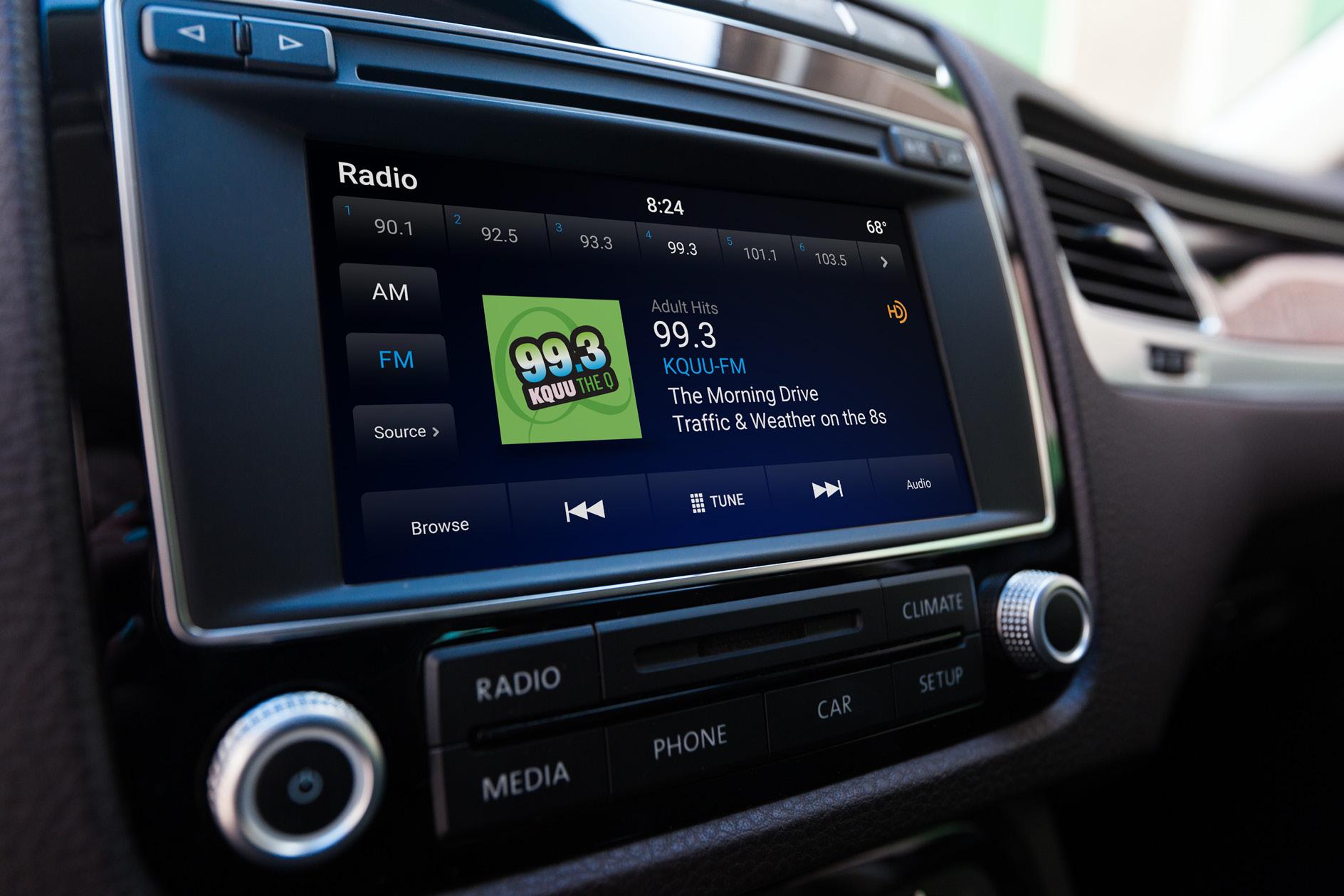

Could radio’s future be in NextGen Television?
Writer James E. O’Neal
It’s certainly no secret that radio broadcasting has been moving away from its centuryold analog over-the-air delivery platform.
One large media company, the Sinclair Broadcast Group, is now field-testing a delivery modality that may prove to be the medium’s next step into 21st century broadcast ecosystems.
The ATSC 3.0 or “NextGen TV” IPbased digital television transmission system is being rolled out rapidly across the country, with a projected availability in 82 percent of U.S. markets by year’s end; and the technology is being beta-tested at a Sinclair-owned ATSC 3.0 Class A television property in the Washington, D.C. market, WIAV(CD).
An open door?
Mark Aitken, Sinclair’s senior vice president of advanced technology and president of One Media 3.0, says the initiative is part of a larger effort exploring the full potential of the hybrid over-the-air/internet digital television transmission standard in terms of new business models and opportunities for broadcasters.
“We’ve been building out the Baltimore/Washington marketplace with some ATSC 3 showcase applications for automotive,” said Aitken. “ATSC 3 opens the door for providing additional content beyond television services.”
Above A screenshot of the audio services opening page is shown on the wall of this composite image. It reads “Press any button to begin your experience.”
But for Radio World readers, the story of interest here is that, in addition to multiple streams of NextGen TV content, the station is providing a “multiplex” of audio services that includes Hubbard Broadcasting’s all-news operation in the nation’s capital, WTOP(FM).
The package of a dozen or so audio services, including WTOP, is available free to owners of ATSC 3.0 television receivers. This is enabled through an app that’s easily executed on the sets themselves as a function of the NextGen TV interactive layer.
“With an ATSC 3 television set, the user launches the app that’s announced on the channel,” said Aitken. “The app lists the available
Longtime Radio World contributor and former technology editor of TV Tech.
radioworld.com | November 9 2022 New Technologies
Vanit Janthra/Getty Images
services. We launched the audio services inside of STIRR XT (Sinclair’s brand for NextGen TV alternative services).

“When you turn to the channel there’s a very recognizable icon that looks like a remote control that questions the viewer about launching the app. Using the remote control the user can navigate around various services; weather, news, traffic, headlines, etc. As well, there is STIRR XT, and inside of that are music services which include country, rock, classical and other services. The WTOP audio is just one piece of this [although] it’s at the top of the audio service list as we wanted to bring local radio into the environment.”
Aitken added that the “radio” app is not specific to one make of NextGen TV but is designed to install on any of the LG, Samsung and Sony sets that offer ATSC 3.0 capability.
The music channels accompanying WTOP are by a third-party Stingray, which provides customized audio services.

Alternative to satellite?
Aitken noted that this NextGen TV audio delivery service is thought of as a possible alternative to that provided by satellite broadcaster SiriusXM, but with the addition of existing local radio services that’s already familiar with listeners.
“If we can include local radio in different markets as part of that whole experience, we believe that there’s a compelling consumer proposition to offer that as a paid service. You might get 100 channels that are uniformly the same and not much different than SiriusXM — for example ’70s, ’80s, ’90s channels, an Elvis channel, a classical channel, all of those — but part of that mix should be local radio.”
Aitken said the inclusion of local radio programming streams and other audio with television makes sense, especially with the plethora of consumer devices for consuming content that exist today.
Top
The radio audio of Washington, D.C.’s WTOP is listed at the bottom of the screen, available via Sinclair’s WIAV(CD) ATSC 3.0 television facility.
Above Mark Aitken
Below Right
A number of music genres are available in addition to the allnews WTOP radio broadcasts.
“When content comes in on different platforms … this is a barrier to many consumers — having to switch from one platform to another,” he said.

“Part of the equation is getting the user interface right. People don’t like having to push buttons other than ‘channel up/channel down’ and ‘volume up/volume down’ in between services. NextGen TV can be the common platform that brings different service together for a great consumer experience.”
Aitken envisions using the enhanced capacity for delivering data that’s part of the ATSC 3.0 standard for delivery of perhaps 50 to 100 or more audio services, without affecting
the capability for simultaneously providing very high-quality television.
“[With ATSC 3.0] we’re doing HD video with 3 Megabits per second typically, if one of the channels is operating with HDR (high dynamic range), we might use more bits. However, the bits used [for AC-4 audio] right now are inconsequential. You could do a voice-only service using xHE-AAC compression with only 6 or 7 kbps. You can do stereo music services starting at 12 kbps. So, you’re not talking about using up a whole lot of capacity.
“What that means on the inverse side is that you can provide a very robust tier — a very robust PLP (physical layer pipe) inside ATSC 3 with a very robust modulation and coding formulation — and provide excellent indoor and
6 radioworld.com | November 9 2022 New Technologies

Above WIAV(CD) viewers can easily navigate the ancillary audio services with their TV remote control.

mobile service without having to sacrifice a lot of spectrum.”
(The original ATSC 1.0 digital television compression scheme caps data rates at about 19 Mbps within a 6 MHz television channel, while the much more efficient ATSC 3.0 coding methodology can provide upwards of 25 Mbps within the same 6 MHz of broadcast spectrum at similar SNR.)
When asked about promotion of the ancillary audio service available on Sinclair’s D.C. TV station, Aitken said that there had been none.
“There’s been no advance publicity; people discover it through the process of discovering ATSC 3. The response to [the audio service] has
been positive, based on data analytics collected on those devices.”
Useful feedback
Such data analytics leads to another big plus that’s associated with ATSC 3.0, whether the programming being consumed is video or audio. The hybrid OTA/internet connectivity of the NextGen TVs provides a return channel from consumers that can provide content producers or distributors with “instant” demographics on how their content is going over with consumers.
“In the ATSC world where the smart TV is connected to the internet, we can get real data about consumer actions,” said Aitken. “This
is real data, not data extrapolated through Nielsen.”
Aitken said that at this point in the trial his company is not paying a lot of attention to such feedback for actionable activity, but it could be valuable as the concept of radio-viaATSC 3.0 takes off.
He mentioned that the potential interactivity between content originators and consumers afforded by NextGen TV is starting to get some creative juices flowing within the radio community.
“Some of the radio guys have ideas about things that they’d like to do, but can’t do in radio today, like promotions for concerts,” said Aitken. He said Sinclair has been approached by some radio groups for more information about “3.0 radio.”
Sinclair is not currently in the radio broadcasting business, but has owned properties in the Seattle market in the past, and previously experimented with airing radio audio there in connection with its ATSC 3.0 TV broadcasts. Asked if the company is considering re-entering radio, Aitken replied that there had been some discussion, but nothing has been decided yet. The on-going D.C. market “proof of concept” trial is being conducted just “to show that there are automotive and audio business opportunities.”
“As we’re not in the radio business [now], we’re probably looking at partnering where we sell the bits and someone else provides the audio service.”
He observed that while the audio services are now provided free, this would eventually change in today’s world of “bits for bucks,” especially when 3.0 capabilities are extended to automobiles.
“In the automotive environment, we think that such services should be for pay,” said Aitken. “We think that there are opportunities, or certainly value, in providing competition to SiriusXM, [which comes] with an interactivity that’s not available on any other platform.”
“We’ve been building out the Baltimore/Washington marketplace with some ATSC 3 showcase applications for automotive. ATSC 3 opens the door for providing additional content beyond television services. ” 8 radioworld.com | November 9 2022 New Technologies
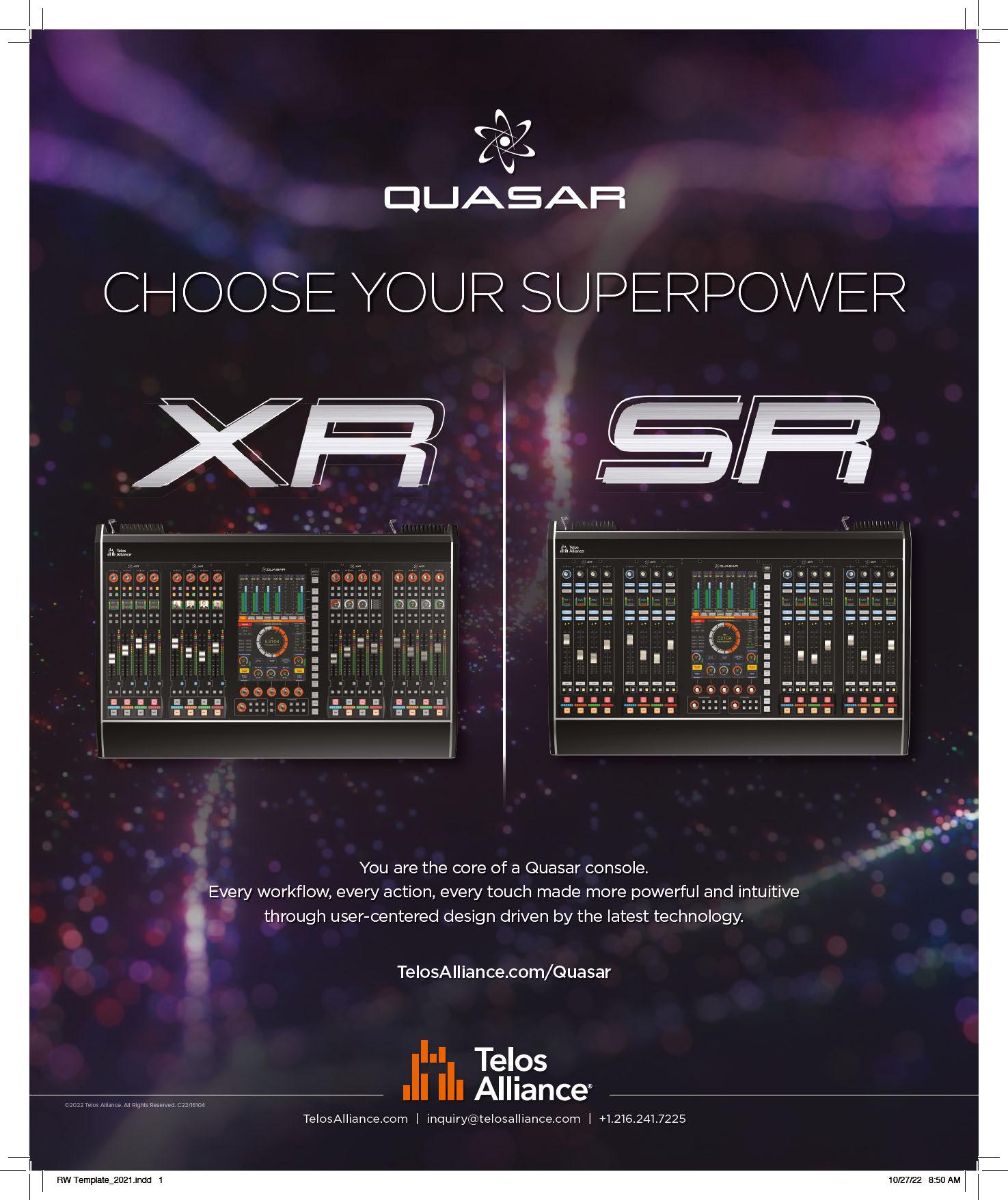 John Bisset
John Bisset
The author has spent over 50 years in broadcasting and is in his 32nd year writing Workbench. He handles western U.S. radio sales for the Telos Alliance and is a past recipient of the SBE’s Educator of the Year Award.


Why the transmitter won’t make licensed power
An unwanted visitor caused problems for this station

No, that’s not a sheathed cable running vertically to the left of the coils in this Nautel ND5 AM transmitter.
Operating at 4.2 kW normal total power output, this transmitter went off the air, and the remote control called Positive Radio Group Project Manager Winston Hawkins. He tried to reset the transmitter remotely but the rig wouldn’t come up.
Once Winston got to the site he attempted to turn the system on locally. The rig finally came up, but only at 200 watts, much less than the licensed 4.2 kW.
Tips Please
Workbench submissions are encouraged and qualify for SBE recertification credit. Email johnpbisset@ gmail.com
This box shares towers with another of the company’s transmitters. Since the other one was still on the air, he knew the problem likely wasn’t with the towers; but the other station was in the middle of a semi-annual fundraiser, so Winston could not shut that one down to be sure.
Instead, Winston switched the ND5 into the dummy load. The transmitter still only made 200 watts, which isolated the problem to that transmitter.
Right
What looks at first like a black cable at left turns out to be something different.
When he opened the panel covering the RF output network, Winston saw the snake, or what was left of it, visible in the accompanying photo.
He removed the carcass but still had a problem with the transmitter operation. Using a strong trouble light, Winston found that the ceramic parallel capacitors in the output network were cracked, and there was a connection problem with the coil on the other side of the panel. After replacing the parts, he was able to return the transmitter to service. NAUTEL
With that incident as a prompt, Winston offers several suggestions to Workbench readers.
As temperatures get colder, check your transmitter building for potential entry points for snakes and vermin. Seal them up. The same for outdoor antenna tuning units.
Also scatter mothballs along the floor of the transmitter building to deter snakes and rodents.
nautel.com/HDradio
HAS YOU COVERED
More than 50% of new vehicles ship with HD Radio technology
CPBE
10 radioworld.com | November 9 2022 Workbench
With transmitter power disconnected and all components discharged, also use a very bright trouble lamp to conduct a thorough visual inspection of your high-voltage components during a maintenance session. (Remember to work with a buddy.)
As you inspect, look for discolorations in metal connecting straps or tubing, indicating excessive heating. Loose bolts at these connection points can cause the heat and eventual failure.
You may see a green tint forming on bolted sections of copper pipe or strap connections; this substance is patina. Similar to rust on steel, patina or green oxidation is corrosive. Take apart the junction and clean it with a Scotch-Brite Dobie or other brand of all-purpose cleaning pad.
During your visual inspection, look for cracks or leaks in capacitors. Gently wiggle soldered connections to make sure they are snug. Tighten bolted connections throughout.
Yearly inspections will help you identify and correct potential problems before they become catastrophes.
It might get loud
We have touched on the topic of decibels in previous columns. With that in mind, Paul McLane, our editor, passed on a handy calculator chart that you can download from Radio Design Group.

The company’s business is to solve and simplify complex communication problems with customized and innovative RF solutions. We appreciate their efforts in educating broadcast engineers.

The chart is simple and designed to give you quick dB approximations. It’s surprisingly easy to use and remember. Get your free copy at https://www.radiodesigngroup.com/.
Rust never sleeps
Looking to break the bonds of rust? Grab a can of WD-40 Specialist Penetrant with EZ-Reach.

This formula acts fast on bolts, nuts and locks; the company says it penetrates twice as fast as other brands. In addition to breaking through rust, a protective coating is left behind. The compound is safe for use on metal, rubber and plastic parts.
EZ-Reach is a flexible 8-inch tube — the company calls it a straw — that you can use to direct and dispense the product in hard-to-access areas.
11 Workbench
“
Check for entry points for vermin, and scatter mothballs along the floor of the transmitter building.
You can watch a short demo video
Above Promotional image for WD40 Specialist Penetrant with EZ-Reach.
at YouTube by typing
”
Left The cover of a decibel calculator reference that you can download for free from Radio Design Group. radioworld.com | November 9 2022
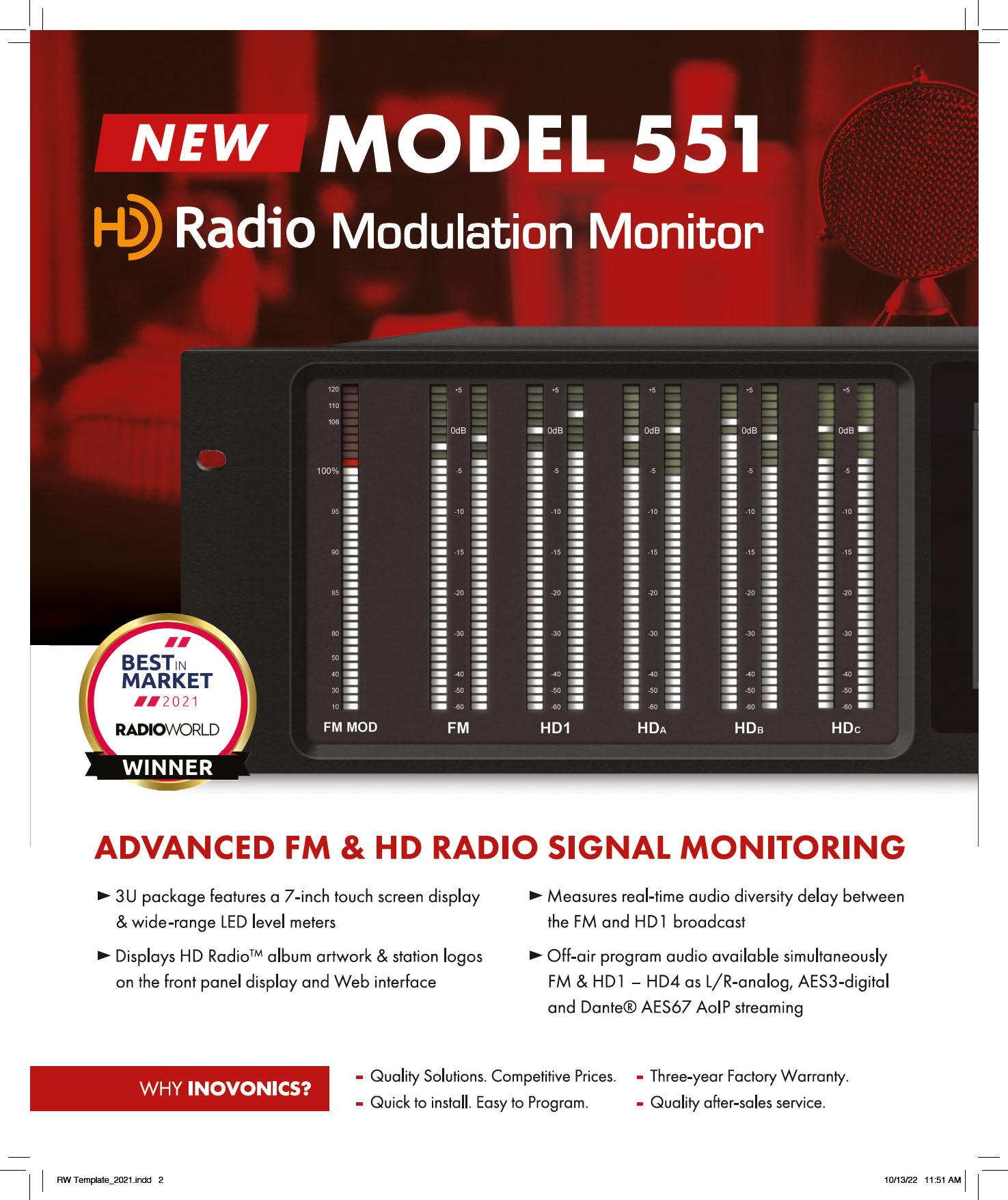

connected car.” Because the listener is in a vehicle, he added, the platform avoids problems facing connected TV and online media platforms that sometimes count consumers who aren’t actually watching their screen or who aren’t even in the room.
The dashboard that Xperi will roll out in the first quarter of 2023 provides a radio manager with visual reports about patterns of listening to their own station. D’Angelo provided an example of a “heat map” (shown at right) that a station salesperson could show to a retailer to demonstrate how many cars in the client’s neighborhood are tuned to the station. He also pointed to a chart of hourly listening to a London station (not shown here) that demonstrated powerful spikes in listening when the news of the queen’s declining health and subsequent death broke.

Xperi also gave an update on its efforts to secure a foothold in the car industry. To date, Daimler and its
“
Bouvard
Mercedes vehicles are the only announced automotive partners; but D’Angelo said two more major carmakers were in the process in October of downloading DTS AutoStage in their software updates to cars in the field; those names were to be announced soon. Xperi expects to add another five carmakers in the next 12 to 24 months.
The DTS AutoStage platform is intended to be global, and D’Angelo said Xperi now has coverage in more than 100 countries, supporting over 80,000 radio stations.
As the pool of data being fed back to those stations from cars on the road scales up, he said, the system becomes more powerful. He said Xperi has recorded more than 1.78 billion tuning/location “events” globally so far — 204 million in the United States alone — despite the limited rollout of DTS AutoStage into car models so far. As more cars come online, he said, those numbers should grow rapidly.
salesperson could use this “heat map” to show many cars in a client’s neighborhood are tuned to the station.
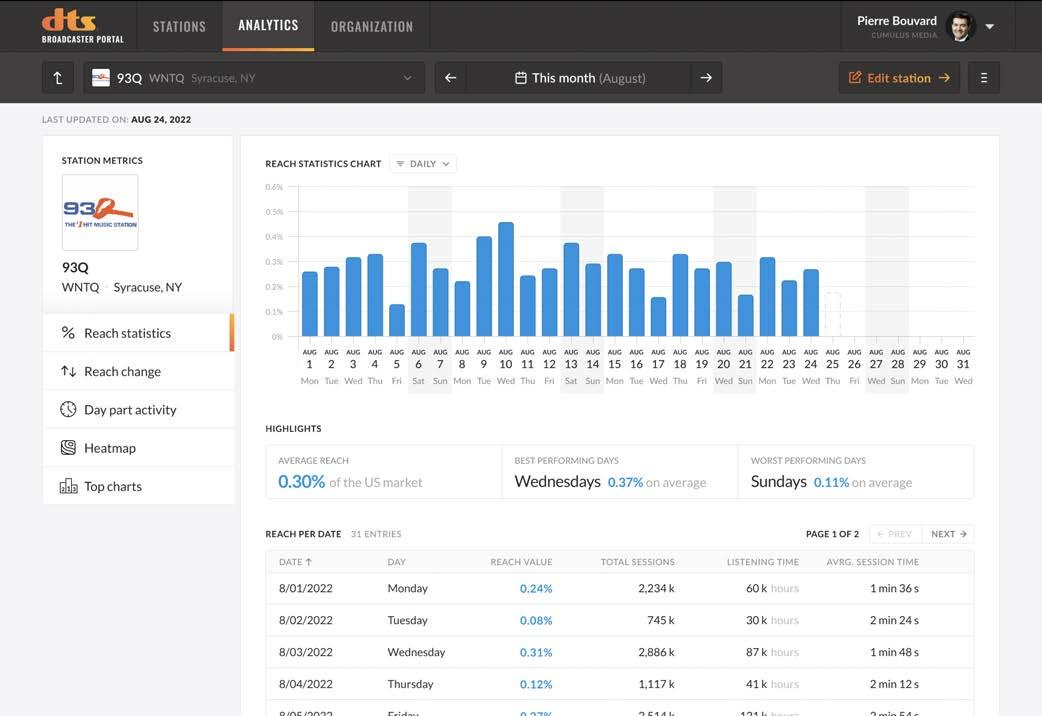
Above D’Angelo demonstrated the dashboard’s ability to show the impact of special events and promotions.
carmakers. But radio stations need to provide certain information to Xperi, D’Angelo said.
That includes station data like call letters, name and logo; a streaming URL so the platform can switch from OTA reception when your broadcast signal fades or the car leaves the market; and live programming data including song title/artist metadata, the names of advertisers from ads, and DJ names and photos.
Until now Xperi has sought to educate the industry about technical aspects of the platform and its current or pending features such as seamless blending, lyrics, personalization, and recommendations for non-broadcast content that is nevertheless provided by radio broadcasters.
But the message to radio executives in New York was that the tool has vital implications for measurement and monetization.
Continued from page 3 14 radioworld.com | November 9 2022 From the Editor
described the evolving DTS AutoStage platform as providing big data for American radio from the connected car.

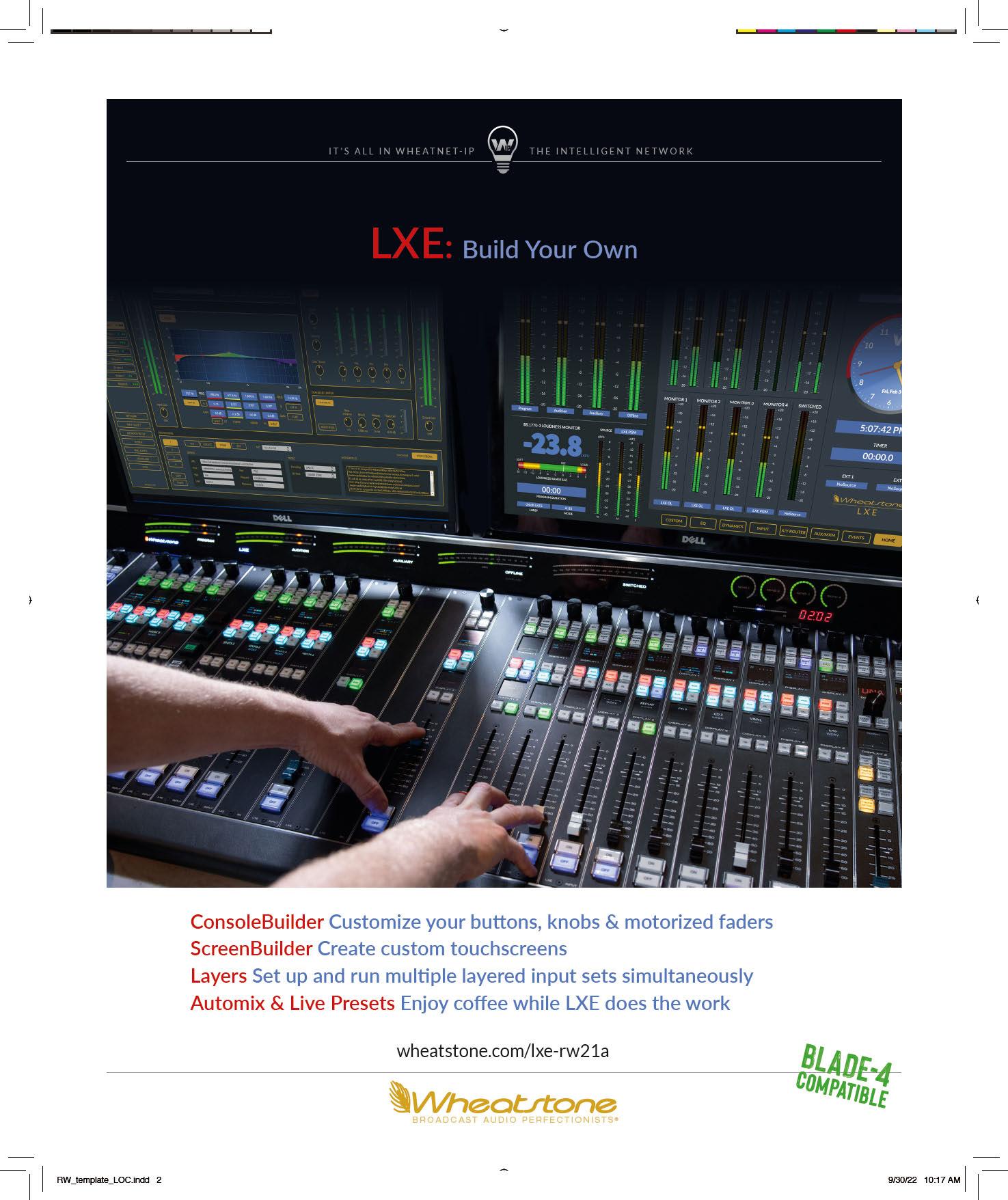
 Writer
Writer
Wireless EV charging could pose threat to AM reception
New medium-frequency interference concerns are raised by Xperi
Randy J. Stine
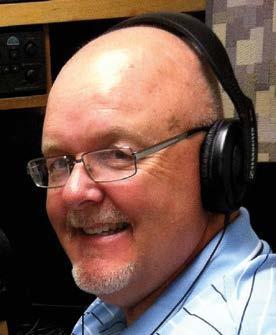
The author wrote last month about the FCC’s efforts to pursue pirate radio operators through building landlords and property owners.
Consumers are eager to cut the cord on their electronics charging devices, a trend that could soon benefit drivers of electric vehicles (EVs).
HD Radio developer and licensing company Xperi is seeking to raise awareness about a potential new threat to AM radio broadcast reception: the proposed introduction of wireless power transfer systems for electric vehicle charging, or WPT-EV, that use switching frequencies that generate harmonics in the lower AM band.
Xperi filed comments about this concern in response to a notice of inquiry at the FCC about radio receiver performance. It hopes to raise awareness and also believes its HD Radio technology can be of help.
WE LOVE RADIO
It touches us. It unites us. It brings us hope and helps us feel less apart.
THANK YOU FOR BROADCASTING. Trust that we’re here to support you.
Interference to AM from unintentional radiators including low-cost switching power supplies in EVs is a concern, even before the question of wireless charging comes into the discussion.
EV sales are rising across the globe, and the United States has set a lofty
goal that half of new vehicles sold are to be electric by 2030, according to the National Association of Broadcasters. With that comes growing concern over noise on the AM band in EVs. The electromagnetic interference from EV motors to AM radio signals is well established, and some carmakers have pared AM radio from dashboards because of concerns over audio quality.
“Seemingly inexorable”
Now wireless EV charging systems are being proposed by several developers and being considered by international standard setting organizations.

“This topic has been heavily discussed within ITU [the International Telecommunication Union]. As WPT-EV engineers design more efficient ways to transmit power, the seemingly inexorable increase in AM-band noise floors can be expected to continue,” Xperi told the FCC.
The ITU is the United Nations specialized agency for information and communication technologies. In 2019 it reported on various wireless power transmission applications in use around the world.
18 radioworld.com | November 9 2022 Automotive Electronics
nadla/Getty Images

The group noted the frequencies expected to be used for WPT for electric vehicle charging could affect a large number of radio services.
“The impact can be on the same frequency, adjacent frequencies or frequencies with larger separations,” ITU said.
The frequency range for those WPT systems are often around 85 kHz, according to ITU, which “does not overlap with any broadcasting band, and so it is only harmonic emissions from such systems that would have any impact. It may also be that harmonics are used in the power transfer process.”
But ITU wrote that WPT-EV is expected to produce harmonics in the bands 148.5–283.5 kHz, 525–1705 kHz and 2300–26100 kHz and can interfere with the reception of LF, MF and HF sound broadcasting.
Xperi in the past has been among those calling for better control overall of manmade electromagnetic interference. (It has also expressed concerns about LED lighting interfering with lower-level FM signals.)
The proposed wireless EV chargers provide no shielding from EMI, according to Xperi. EMI can be suppressed in EVs using mitigation techniques such as shielding cables and electric motors and installing filters, but that might not work in the case of wireless EV charging pads, according to Xperi officials.
Wireless charging uses the principle of electromagnetic induction to transmit electrical power through the air as a magnetic field, which allows car owners to cut the cord, according to Plugless Power, a developer of autonomous charging. The process is sometimes referred to as wireless inductive charging.
Nearly every electric car maker has plans for handsfree EV charging, according to observers familiar with developments in this area. EV buyers are already being given the option for built-in wireless charging.
Just how commonplace wireless EV charging might become is only limited by the imagination, according to some vehicle developers. One has described a future in which specific lanes on the freeway contain charging pads, over which EV vehicles drive to charge while in motion.
ITU interest
Ashruf El-Dinary, senior VP for radio technology solutions at Xperi, said the potential impact of noise from wireless charging has fallen under the radar in the United States.
“However, it’s being actively discussed within ITU and on a number of different fronts, from small chargers for phone
Above
An image from a video by Chroma Systems Solutions explaining the concept of EV wireless charging. (Learn more at www.chromausa. com.)
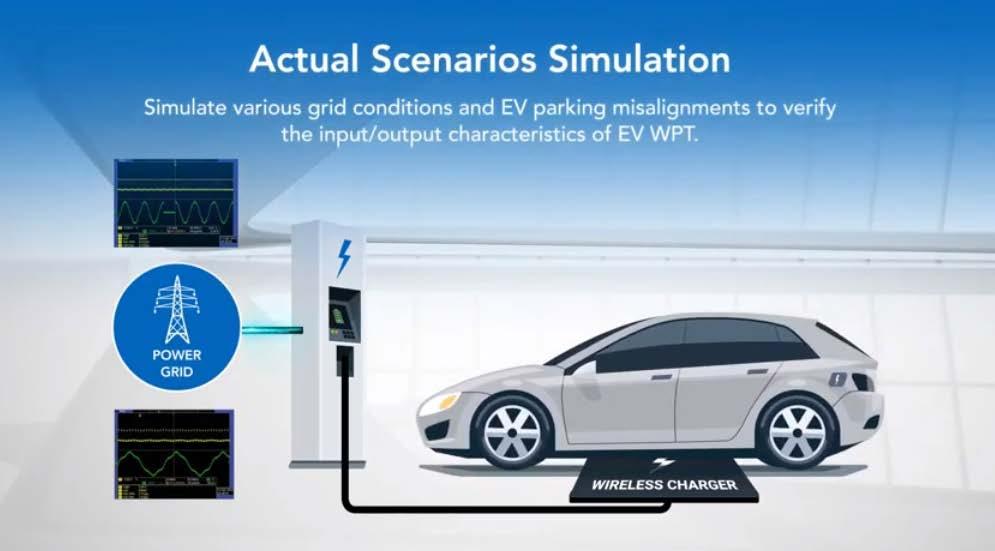
and electronics but also on these larger concepts with wireless charging pads for the home or office and even the wireless changing networks built into streets for EV buses and other vehicles,” El-Dinary said.
“This is still a new industry that is growing. And with the Biden administration infrastructure plans to build out EV charging networks in place, the companies behind wireless charging are feeling empowered to put forward these new concepts looking for some regulatory help.”
El-Dinary and others believe FCC rules covering unintentional radiators should be given a role here. “Then ultimately any future technology would have to follow regulations under the FCC. They are in charge of protecting the AM band,” he said.
There are a number of the wireless charging technologies being proposed, El-Dinary said, any of which will affect AM broadcasters by potentially adding to the noise floor.
“Some of these are pretty high power, and in order to do that they need a higher modulation frequency for coupling. And it’s not so much the fundamental frequency, but the harmonics generated by the wireless charging systems that is a concern to many. Some of the reports are showing that noise is being generated up within 500, 600 and 700 kHz, which will have a direct impact on the lower end of the AM band.”
El-Dinary believes this isn’t so much an issue with shielding of the receiver in EVs but rather the radiation from the wireless charging systems being picked up by the antenna of the car, which is then directly coupled into the tuner.
He said the National Radio Systems Committee has started some paper studies and NAB is keeping abreast of the situation. “The radio broadcast industry needs to be aware of the wireless charging issue and watching developments closely,” El-Dinary said.
20 radioworld.com | November 9 2022 Automotive Electronics
Part 18
According to Bob Weller, senior VP for spectrum policy at NAB, the EV problem is not a doomsday scenario for AM but yet another step in the further erosion of AM broadcast quality and an example of the creeping noise floor threatening the senior band.
“We’ve told the FCC they need to address the growing noise floor, especially in the AM band. We’ve made specific recommendations to protect the AM band from Part 18 equipment, which in most cases include wireless charging systems. The rules are already very explicit that these devices have no spectrum rights. They are not allowed to interfere with licensed broadcasts,” Weller said.
“
It isn’t just car receivers that may suffer interference.
“It might be less of a threat to car receivers and an even a bigger concern to radios on the bedside table or other fixed receivers around the home,” Weller continued.
“Most often a car will be parked when being charged even with a wireless charger. Not too much listening happens in a parked car at the home or office,” he said. “But if eventually there are millions and millions of these wireless EV chargers, then it becomes more of a concern.”
Weller said government regulators are balancing consumers’ insatiable demand for wireless charging devices with the consequences of wireless charging on radio broadcasters.
“Consumers have expectations that everything can be wireless, and they want items to charge quickly. There will
Above An artist’s conception of a modern electric car with battery. The growing popularity of such vehicles may bring further unintended consequences for radio reception.

be interference issues with AM broadcasters if there are not adequate limits placed upon manufacturers of the wireless chargers at the manufacturing stage. Once a large number of these things are deployed, it will be too late to manage it.”
To further complicate things, Weller says FCC Part 18 rules do not limit power levels of wireless charging devices.
“Consumer charging systems are like 10 kW, which seems like a lot of power, but the proposed public transit wireless charging systems are ten times that. But the way we need to get at the interference issue is by limiting the level of the harmonics rather than the fundamental power,” he said.
Robust signal
Xperi believes its own technology can be of use with this issue and suggested that the FCC might want to consider a requirement that car radios have digital radios.
“The digital IBOC modulation used in the HD Radio system provides a significant level of noise immunity,” it wrote.
“As more radio stations convert to digital operations, a minimum product requirement including digital radio capabilities for car and portable AM/FM radio products will ensure continued efficient use of the AM/FM band and the services they provide.”
El-Dinary says all-digital AM operations offer increased signal robustness and additional protection from unintended radiators. “We have found that all-digital AM is very robust and the reception within EVs is that an alldigital station has excellent coverage while the equivalent AM analog terrestrial station is subject to interference from the car itself,” El-Dinary said.
Xperi says while it is possible for WPT-EV and LED interference to overcome digital broadcast signals under appropriate conditions, the “robust OFDM [orthogonal frequency division multiplexing] carriers, signal processing and forward error correction employed in the IBOC standard provide digital radio services with enhanced noise immunity.”
Radio World’s attempts to reach Ford and General Motors representatives for comment on the proposed wireless EV charging systems were unsuccessful.
The rules are already very explicit that these devices have no spectrum rights. They are not allowed to interfere with licensed broadcasts. ”
Thomas-Soellner/Getty
Images
21 radioworld.com | November 9 2022 Automotive Electronics
Dan Slentz

The author has more than four decades’ technical and on-air experience in radio, TV, cable and A/V including service at AFN (AFRTS) in the U.S. Air Force.
Comment on this or any story. Email rweetech@ gmail.com
INconSIStent STREaming LEVels? Get Angry!
Angry Audio offers the Chameleon C4 Livestream Processor with AI

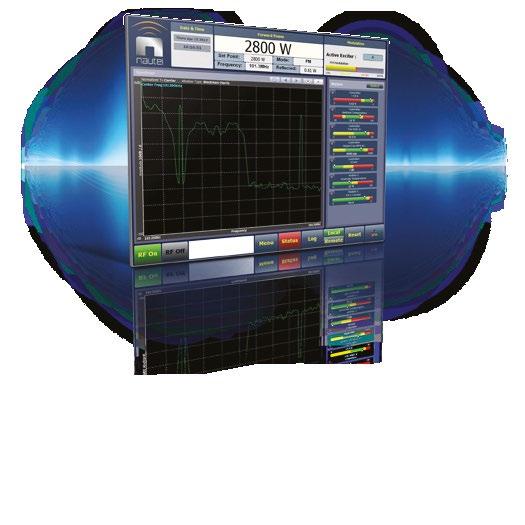
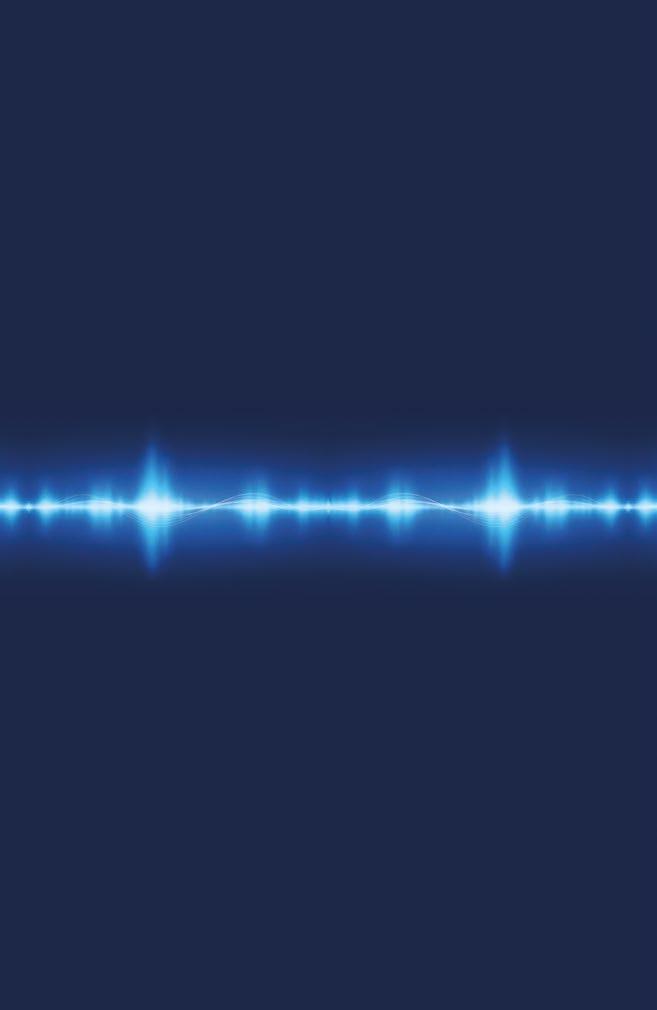
Radio on-air processors typically include a plethora of controls that are not required for streaming audio, such as composite clipping, stereo generation and filtering. Meanwhile streaming has its own considerations including loudness standards or guidelines set by the likes of Amazon, YouTube, Apple and AES.
Streamers also may not have the benefit of on-site engineers with the knowledge to adjust the controls of a traditional audio processor for a streaming context. And as anyone who has set up an audio processor knows, the more controls there are, the deeper a hole you can dig. It’s easy to make a great processor sound very bad if you aren’t sure of what you’re doing.
Along comes Angry Audio with the Chameleon C4, an audio processor designed specifically for streaming applications. It is part of a lineup of easy-to-use audio processing and loudness control products that also includes the Chameleon C3 Headphone Processor and the just-introduced Chameleon C-Level for normalizing contribution audio.
Cost-effectiveness is part of the story here. The C4 lists for $989, the C3 is $689 and the C-Level is $999.
But simplicity of operation and audio quality are the headliners.
The Chameleon is pretty much plug-and-play. There’s a control for density, with a selector that lets you choose light, medium or heavy processing, or bypass mode. There is a recessed screw for LUFS and level calibration. And on the back are two DIP switches, one to enable or disable precision loudness control, the second to choose analog or digital audio for your feeds. That’s it!
The Chameleon’s multi-band audio processing, using artificial intelligence, does the heavy work itself, adjusting its parameters continuously to fit the audio. The processing algorithms are created by Cornelius “Corny” Gould, wellknown for his work in broadcast technology at companies like CBS Radio, Telos Alliance and Futuri Media.
The processor is only 1 RU tall and a half-rack wide; an optional rack frame can hold two Chameleons.
Wiring is easy and flexible. Stereo analog inputs and outputs are on XLRs and StudioHub+ connectors, while AES/EBU ins and outs are on StudioHub+. (Angry Audio
 Writer
Writer
9,000+ AUI Tx Installed AVOID TRIPS SAVE TIME SAVE MONEY nautel.com Continued on page 27 22 radioworld.com | November 9 2022 Product Evaluation
 Wayne M. Pecena
Wayne M. Pecena
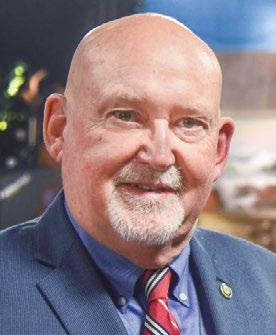 CPBE, 8-VSB, AMD, ATSC3, DRB, CBNE Member, SBE Education Committee
CPBE, 8-VSB, AMD, ATSC3, DRB, CBNE Member, SBE Education Committee
Cybersecurity is founded on simple principles
Get to know CIA, DiD, PoLP, MFA and other key concepts
This is Part 6 in a series.

The broadcast station of today relies on information technology and an internet protocol-based infrastructure, whether it’s a small radio station or a state-of-the-art majormarket radio or TV outlet. The migration to an IT-based infrastructure brings advantages in capability, flexibility, scalability and cost-effectiveness. However, with these comes a downside in exposure to cyberattacks.
Protecting the infrastructure against such threats grows more challenging for the broadcast IT engineer each year.

Cybersecurity is an essential responsibility and cannot be overlooked. It is often viewed as a complex undertaking. It is a multifaceted discipline that can become confusing and challenging.
However, cybersecurity is founded on several simpler core principles. These guidelines and best practices seek to reduce cyber risks and protect IT assets in your organization.
Core principles
The CIA triad is one such principle. It establishes the policies and goals of cybersecurity as ensuring “Confidentiality, Integrity and Availability” of IT systems. (The triad may also be referred to as AIC, for Availability, Integrity and Confidentiality, to avoid confusion with the United States Central Intelligence Agency).
Confidentiality means data within the IT infrastructure is available only to authorized users and systems, whether flowing through networks, stored at rest or used within a workflow process.
Integrity refers to ensuring that the data has not been unduly modified, tampered with or altered.
Writer
24 IT for Radio Engineers
Volker Pape/EyeEm/Getty Images
Availability refers to IT assets being accessible to authorized users and systems when required, but not to those who aren’t authorized. While the focus is on malicious acts, this principle can also be applied to avoiding accidental or human error events.
Another principle is Defense in Depth, or DiD, based on establishing redundant levels or layers of security controls within the IT infrastructure such that there is no single reliance upon a single precaution.

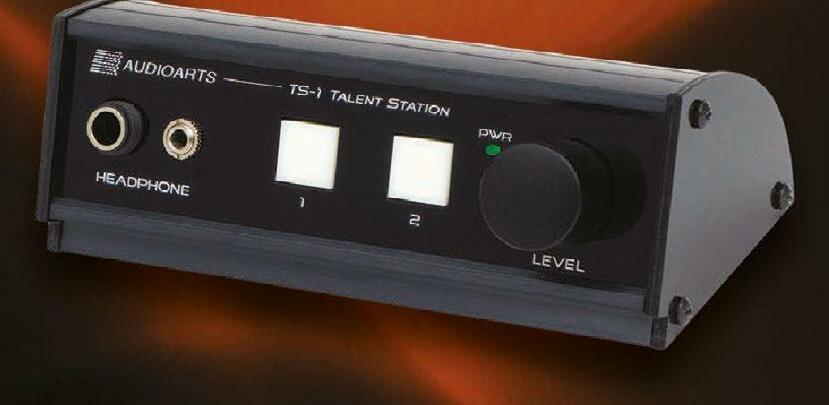

If a security precaution should be breached or fail, another will be in place to prevent any impact. Areas of DiD control include physical infrastructure security, network access, application access and anomality detection systems such as antivirus or artificial intelligence-based malware detection systems.

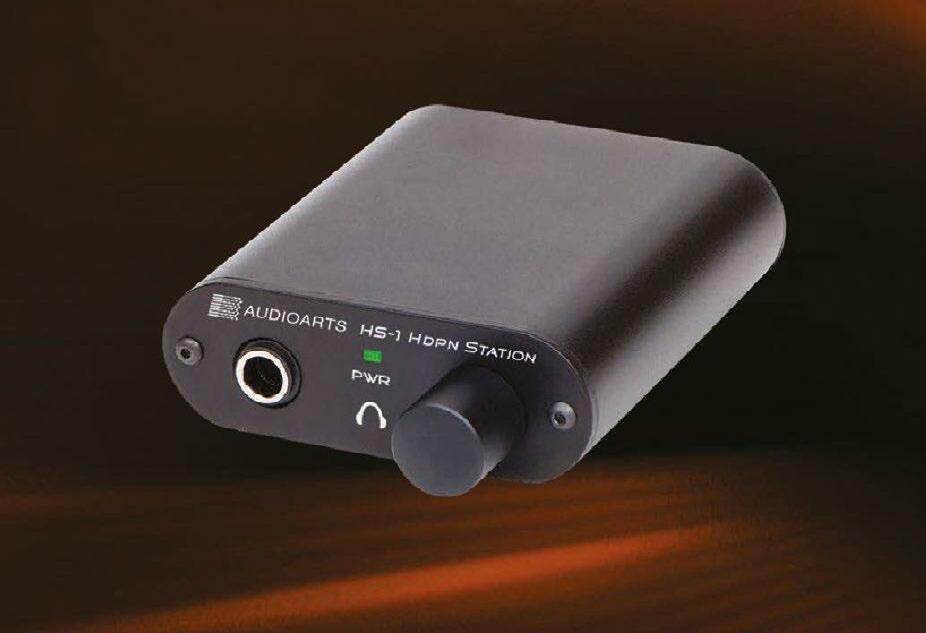
The Principle of Least Privilege, or PoLP, is based on limiting access rights to users and applications at the minimum level necessary to perform the defined business function. Limiting access to IT assets reduces the risk of abuse and propagation of a cybersecurity threat via “eastwest” movement in an IT system.
The National Institute of Standards and Technology Cybersecurity Framework provides a structured set of guidelines and best practices for protecting IT assets and mitigating cybersecurity risks. The framework is organized into the areas of Identify, Protect, Detect, Respond and Recover; these are divided further into several categories and sub-categories before reaching a specific guideline or best practice to implement.



To-do list
With the background knowledge of fundamental principles and a long list of NIST framework best practices at hand, one can develop a “to-do” checklist of cybersecurity prevention steps.
Such a list might look like the following:
• Utilize the DiD approach to provide redundant precaution implemented in a structured and coordinated manner
25 IT for Radio Engineers
“With cybersecurity precautions in place it is now time to become a hacker yourself. ”
• Segment your network as the right architecture is an important first step in cybersecurity precautions (and performance enhancement)
• Use encryption and multifactor authentication (MFA) for any remote access
• Apply PoLP to users and applications
• Limit or control access by packet filtering and/or firewalls
• Disable (or block) any unused services to minimize the attack plane
• Keep IT network hardware and operating systems updated and current

• Ensure default login credentials are changed to strong, unique credentials
• Maintain system backups following the 3-2-1 rule and know how to restore those systems
• Utilize network equipment capabilities such as Ethernet switch port security
• Monitor your infrastructure and know what is normal
• Educate users regarding the dangers and tactics of social engineering and phishing
Proof of performance
With cybersecurity precautions in place it is now time to become a hacker — not a malicious or “black hat” hacker, but a “white hat” or ethical hacker, also known as a penetration tester.
About This Series
This article is based on an excerpt from the Society of Broadcast Engineers CBNT/ CBNE Study Topics webinar series, designed to assist those seeking SBE certification and to provide others a broad overview of IT as used in broadcast engineering. This webinar and many others are available to anyone for a modest fee, with members receiving a discounted rate and free to those with the SBE MemberPlus upgrade. Consider joining if you are not a member at sbe.org.
The same tools that a malicious hacker might use are applied to verify that the proper cybersecurity precautions are in place and functioning as intended, and to seek cybersecurity vulnerabilities so that proactive corrective action can be taken.
The malicious hacker seeks to exploit the goals of the CIA triad, while the white hat hacker uses penetration tests to verify that protections are in place.
Often referred to as port scanners, open-source tools such as “nmap” (www.nmap.org) can be used to seek and find potential cybersecurity vulnerabilities through simulation of a cyberattack. Scanning tools can be used to identify host devices that are visible on a network, the operating system used, services enabled by active port identification and versions of services being executed.
Enhanced capabilities include the ability to script or automate the testing process through the nmap scripting engine (NSE). Advanced detection techniques can be utilized such as determining the firewall or packet filtering implemented and firewall evasion and avoidance to avoid prevention system detection.
Penetration or “pen” testing is the last step in your cybersecurity prevention plan and can be viewed as the “proof of performance” of the broadcast IT system to ensure the cybersecurity precautions thought to have been put in place are working as intended.
Statement of Ownership, Management, and Circulation (Requester Publications Only) 1. Publication Title 2. Publication Number 3. Filing Date Radio World 3086 28/9/2022 4. Issue Frequency 5. Number of Issues Published Annually6. Annual Subscription Price Bi-Weekly with additional issues in February, March, April, June, September, October and December 26 Requester 7. Complete Mailing Address of Known Office of Publication (Not printer) (Street, city, county, state, and ZIP+4) Contact Person Future US Inc. Cindy Cardinal 130 West 42nd Street, 7th FL Telephone New York, NY 10036 847-438-4577 8. Complete Mailing Address of Headquarters or General Business Office of Publisher (Not printer) Future US Inc. 130 West 42nd Street, 7th FL New York, NY 10036 9. Full Names and Complete Mailing Addresses of Publisher, Editor, and Managing Editor (Do not leave blank) Publisher (Name and complete mailing address) Carmel King 130 West 42nd Street, 7th FL New York, NY 10036 Editor (Name and complete mailing address) Paul J. McLane 130 West 42nd Street, 7th FL New York, NY 10036 Managing Editor (Name and complete mailing address) NONE 10. (Do not leave blank If the publication is owned by a corporation, give the name and address of the corporation immediately followed by the names and addresses of all stockholders owning or holding 1 percent or more of the total amount of stock. If not owned by a corporation, give the names and addresses of the individual owners. If owned by a partnership or other unincorporated firm, give its name and address as well as those of each individual owner. If the publication is published by a nonprofit organization, give its name and address.) Full Name Complete Mailing Address Future US Inc. (Future PLC) 130 West 42nd Street, 7th FL New York, NY 10036 11 Known Bondholders, Mortgagees, and Other Security Holders Owning or Holding 1 Percent or More of Total Amount of Bonds, Mortgages, or Other Securities. If none, check box 4 Q None Full Name Complete Mailing Address 12. Tax Status (For completion by nonprofit organizations authorized to maiI at nonprofit rates) (Check one) The purpose, function, and nonprofit status of this organization and the exempt status for federal income tax purposes: Q Has Not Changed During Preceding 12 Months c Has Changed During Preceding 12 Months (Publisher must submit explanation of change with this statement) PS Form 3526-R, July 2014 PSN: 7530-09-000-8855 13. Publication Title 14. Issue Date for Circulation Data Below Radio World September 1, 2022 15. Extent and Nature of Circulation Average No. Copies Each Issue No. Copies of Single Issue During Preceding 12 Months Published Nearest to Filing Date a. Total Number of Copies (Net press run) 4852 4885 Outside-County Paid/Requested Mail Subscriptions Stated on PS Form 3541. Include direct written recipient, telemarketing, (1) and Internet requests from recipient, paid subscriptions including 4504 4499 nominal rate subscriptions, employer requests, advertiser's proof copies and exchange copies.) In-County Paid/Requested Mail Subscriptions Stated on b. Legitimate PS Form 3541. Include direct written recipient, telemarketing, Paid and/or (2) and Internet requests from recipient, paid subscriptions including Requested nominal rate subscriptions, employer requests, advertiser's proof Distribution copies and exchange copies.) (By Mail and Sales Through Dealers and Carriers, Street Vendors, Outside the Mail) (3) Counter Sales, and Other Paid or Requested Distribution Outside USPS. (4) Requested Copies Distributed by Other Mail Classes Through the USPS (e.g. First-Class Mail) C. Total Paid and/or Requested Circulation 4 4504 4499 (Sum of 15b. (1), (2),(3),and (4)] Outside County Nonrequested Copies Stated on PS Form 3541 (include Sample copies, Requests Over 3 years old, Requests (1) induced by a Premium, Bulk Sales and Requests including 209 268 Association Requests, Names obtained from Business Directories, Lists, and other sources). In-County Nonrequested Copies Stated on PS Form 3541 d. NonRequested (include Sample copies, Requests Over 3 years old, Requests Distribution (2) induced by a Premium, Bulk Sales and Requests including (By Mail and Association Requests, Names obtained from Business Outside the Mail) Directories, Lists, and other sources). Nonrequested copies Distributed Through the USPS by Other Classes of Mail (e.g. First-Class Mail, Nonrequestor Copies (3) mailed in excess of 10% Limit mailed at Standard Mail or Package Services Rates). (4) Nonrequested copies Distributed Outside the Mail (Include Pickup Stands, Trade show, Showrooms and Other Sources). e. Total Nonrequested Distribution (Sum of 15d (1), (2), (3) and (4)) 209 268 f. Total Distribution (Sum of 15c. and 15e.) 4 4713 4767 g. Copies not Distributed 4 139 118 h. Total (Sum of 15f and g) 4852 4885 i. Percent Paid and/or Requested Circulation 4 95.6% 94.4% (15c divided by 15f x 100) * If you are claiming electronic opies, go to line 16. If you are not claiming electronic copies, skip to line 17. 16. Electronic Copy Circulation a. Requested and Paid Electronic Copies 4 b. Total Requested and Paid Print Copies (Line 15c) + Requested/Paid Electronic Copies 4 (Line 16a) c. Total Requested Copy Distribution (Line 15f) + Requested/Paid Electronic Copies 4 (Line 16a) d. Percent Paid and/or Requested Circulation (Both Print & Electronic Copies) 4 (16b divided by 16c x 100) c I certify that 50% of all my distributed copies (electronic and print) are legitimate requests or paid copies. 17 Publication of Statement of Ownership for a Requester Publication is required and will be printed in the November 9, 2022 issue of this publication. 18. Signature and Title of Editor, Publisher, Business Manager, or Owner Date Carmel King Group Publisher September 28, 2022 I certify that all information furnished on this form is true and complete. understand that anyone who furnishes false or misleading information on this form or who omits material or information requested on the form may be subject to criminal sanctions (including fines and imprisonment) and/or civil sanctions (including civil penalties). PS Form 3526-R July 2014 26 IT for Radio Engineers
now owns the StudioHub product line.) An analog input pass-through connector allows you to feed other devices.

The front includes both full-size and mini headphone jacks, with volume control. The C4’s power supply is built in, so there is no wall-wart.
Open and natural
I spent a number of hours listening to C4-processed stream demos; you can listen yourself at https://angryaudio.com/c4/
I was able to listen to a pop station with the heavy setting, and an alternative station with the light and medium settings.
Angry Audio promotes the C4 for its loudness, consistency, punch and clarity, and I found that for streaming applications it delivers on those promises, particularly given its price tag. I believe I heard some gain riding, indicating that the box was doing what it was supposed to do; it was slow and thus not jarring.
Angry also promises “a very open and natural sound that preserves the character of the content,” and that’s what I found — C4 doesn’t “color” audio like on-air broadcast processors can and sometimes do, especially if settings are abused. Chameleon is true to the original unprocessed audio with no coloration.
Its precision loudness control works flawlessly. It holds the audio to a targeted level (–24 LUFS to –14 LUFS).

There is not the stereo enhancer that many radio processors have, nor are there multiple parameters to
adjust to produce, say, a more pronounced vocal, a heavier punch or crisper highs. The intention here appears to be to maintain your material in its original form, while making sure levels stay consistent throughout all the program content, including within each song.
The Angry Audio Chameleon C4 at $989 might be what many streaming stations truly need: a very clean processor that keeps the levels consistent within each song and from program content to program content. As Angry Audio says, it will put an end to the problem of “blasting commercials and mumbling voices.” Your programming will sound consistent even with wildly disparate source material.
The best part for many streamers is you simply can’t adjust this processor incorrectly. Choose your processing level and rotate the switch. Easy!
Cost-effectiveness
“
” Continued from page 22 27 radioworld.com | November 9 2022 Product Evaluation
is part of the story but simplicity of operation and audio quality are the headliners.








28 radioworld.com | November 9 2022
Writer Sally Kane CEO National Federation of Community Broadcasters
Extreme weather challenges radio assumptions
Reflections prompted by wildfires in California’s Nevada County
As images from the Webb telescope morph our perceptions of the vastness of the cosmos, extreme weather events here on planet Earth are also morphing local radio’s role in the life of communities that are increasingly ravaged by floods, storms, earthquakes and massive fires.
Ali Lightfoot, general manager of KVMR(FM) in Nevada City, Calif., put it this way when I visited the station: “There is more to community radio than music. There is a lot more that you are doing in terms of serving the community in times of trouble that you cannot neglect,” she said. “It’s about finding a balance between keeping people informed and helping them through a bunch of really difficult transitions.”
On a regular day we like to think that people depend on us, but in the midst of a terrifying weather event like wildfire, local broadcasters understand more deeply just how much their community needs them.
KVMR focused on building collaboration with local county officials. They trained 200 people in emergency broadcast procedures, provided top-of-the-hour coverage around the clock and created a team of phone volunteers to field a plethora of questions from the distressed public. In this way, they became instrumental in completing a circle between the community and the agencies that serve them.
Mind you that this went on in the midst of staff being evacuated from their homes and one staffer losing their home to fire.
In one wildfire event, Lightfoot learned that she was being evacuated from her home while she was on the air reporting. Sprinkle in a global pandemic and you begin to see the outsized demands that have been placed on local stations that run with a small staff and legions of volunteers.

Below Smoke from nearby wildfires darkens the sky outside the KVMR studios in downtown Nevada City, Calif., in the summer of 2020.

Power outages and evacuation orders are only the beginning of a domino effect of issues that place pressure on small local stations in remote rural areas, where so many community radio stations are.
Virtuous circle In Nevada City, where wildfires are now too familiar, this reality has led to a lot of restructuring.
There are ongoing concerns even when the fires aren’t blazing. For KVMR, increased fire insurance rates plus more demand for people who can wire backup generators into the system present challenges. In the quieter months without fires, the station has developed remote broadcasting kits, put evacuation plans in place, fleshed out a plan to better mobilize volunteers and generally beef up backup plans for the backup plan.
Fire season used to start in September at the base of the Sierras where Nevada City is nestled, but now there is no real beginning or end to it. So this kind of emergency preparedness is ever present and year-round. As Lightfoot noted, “Most of the time you are just trying to do the best you can.”
The time when emergency response was four beeps from a box, randomly scheduled to make sure a mechanism was in place when it might be needed, is a thing of the past. Larger global weather patterns affect local broadcasters on a daily basis in their technical operation, reporting capacity, budget needs and their immediate physical well-being and safety.
It’s a daunting reality to absorb, yet it is also an unprecedented opportunity to show up in new ways to serve communities that rely on the signal flow to keep them safe, connect them with resources and deliver comfort in times of trouble.
There is a whole new world of galaxies that the Webb telescope is showing us at this moment in time; and there is a whole new world of service that local broadcasters are revealing in their quest to be a beneficial presence in the places they call home.
29 radioworld.com | November 9 2022 Community Radio
Photo by Ali Lightfoot
How to submit Radio World welcomes comment on all relevant topics. Email radioworld@ futurenet.com with “Letter to the Editor” in the subject field.

Watch your foot!
I agree with Ira Wilner’s letter in the Aug. 17 issue, “I Have Concerns About the Cloud,” about using it for radio broadcast operations, but for different reasons.
First, as a former engineer, I feel odd handing off critical parts of a station’s operations to a third party. Doing so with a station’s library, scheduling and billing operations just seems like aiming a gun at your own foot.
Next, the potential of hacking. The cloud has to be a major target for any hacker, from the high school novice to the actual malicious actor.
For now we have a choice. Choose wisely.
Pondering “the cloud”
Archie Stulc
experienced that in the OTA-TV world with multiple “Titanic deck chair shuffles” that considerably shrank the available spectrum in favor of those “20,000-pound gorilla” wireless providers, which also caused a number of less-fortunate passengers to “share” some of the remaining “seats.”
In the “olden days,” each station had its own complete (and unique) “chain” from microphone to antenna. A failure in one part did not necessarily take down the others, particularly during emergencies.

Imagine a future where all broadcasters are but “passengers” on a single “liner,” and that “boat” hits an “iceberg.”





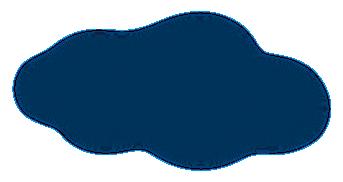
I also share his mistrust of “cloud-based” software, which ensures continuing revenue for Microsoft, et al. When I needed a word processor or spreadsheet for my new Win10 PC, the obvious choice would have been MS Office, but it was available only by “subscription.” After a little research, I found the free (and compatible) LibreOffice, which does it all and is regularly supported, and everything stays “on-Earth.”
Yes, Ira, it sure does look like a new “Wild West.”

As always, your Aug. 17 edition was another enjoyable issue of my favorite magazine!


Thankfully, that federal agency that was once tasked with regulating our spectrum’s users to prevent interference and prevent “concentration of media control” no longer has to concern itself with any of that “old fuddy-duddy” stuff.
Michael Shovan, CBTE
More on mono

Food for thought regarding analog FM stereo reception in automobile receivers (“Turn Off the Stereo and See What Happens,” RW Aug. 17):
Most if not all OEM automobile receivers currently in use have dynamic “stereo blend” circuitry that is constantly adjusting stereo separation and high-frequency response, this as signal strength varies. For this reason, at least some of the time, FM stereo reception in an automobile is actually near mono reception.
For example, the older Sanyo PLL FM MPX stereo demodulator IC LA 3430, designed for FM car stereo use, afforded this “stereo blend” feature as a means for improving signal-to-noise under weak signal conditions.
Signal from a receiver’s IF stage (which varies with signal strength) is applied to Pins 7 and 8 of this IC (Pin 7 the highcut control, Pin 8 being stereo noise control). This control circuitry working in tandem accomplishes a dynamic “stereo blend” process that can actively reduce stereo separation at times to zero and simultaneously reduces high-frequency audio response above 7 kHz or so.
The effect of these combined circuit controls improved the listenability of FM stereo stations in a mobile environment where signal strength is constantly varying.
 Craig R. Seelig NARTE Certified Engineer
Craig R. Seelig NARTE Certified Engineer


Images 30 radioworld.com | November 9 2022 Readers’ Forum
Stan Eales/Getty
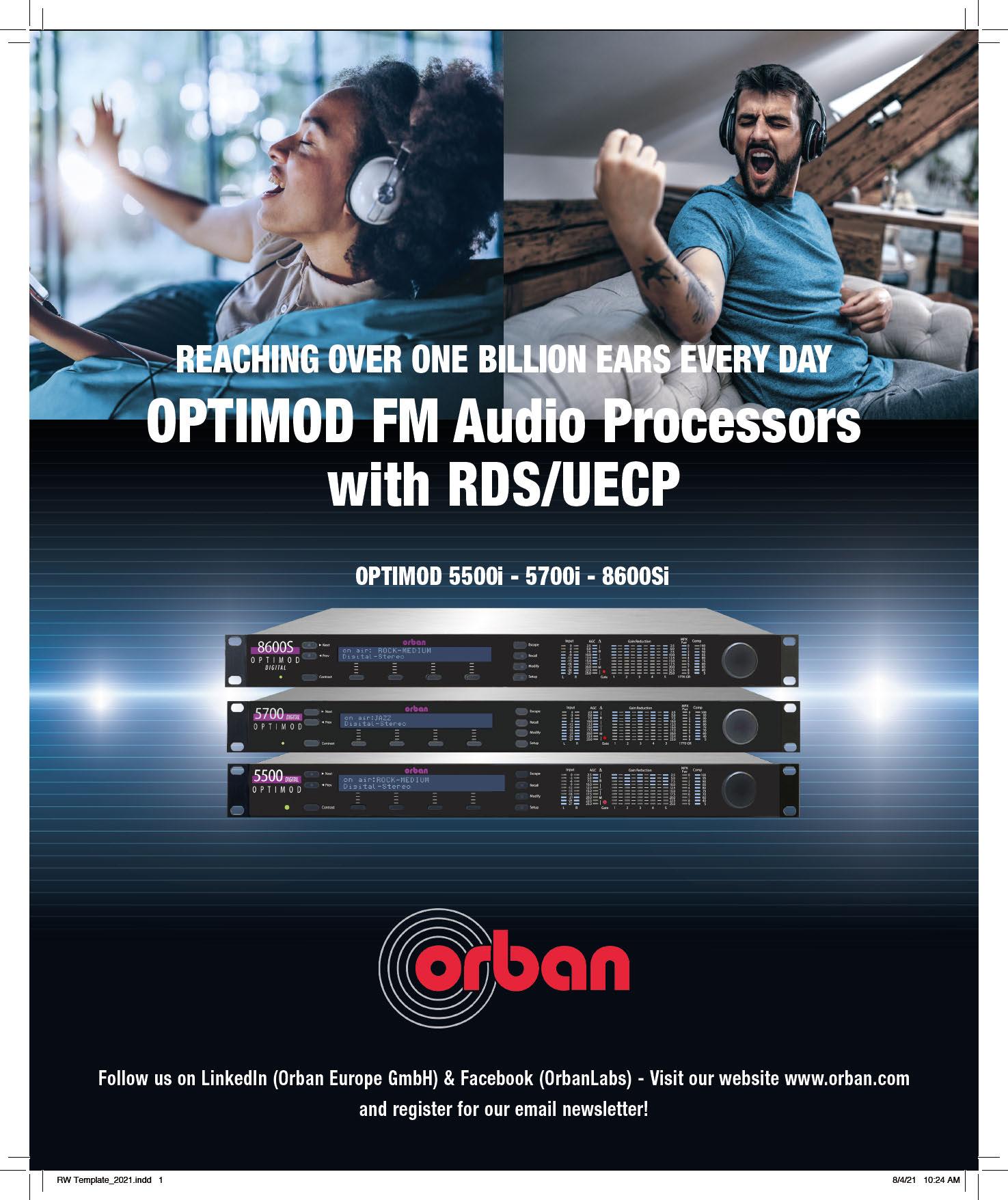

9000




















 John Bisset
John Bisset












 Writer
Writer









 Writer
Writer
 Wayne M. Pecena
Wayne M. Pecena
 CPBE, 8-VSB, AMD, ATSC3, DRB, CBNE Member, SBE Education Committee
CPBE, 8-VSB, AMD, ATSC3, DRB, CBNE Member, SBE Education Committee




























 Craig R. Seelig NARTE Certified Engineer
Craig R. Seelig NARTE Certified Engineer








